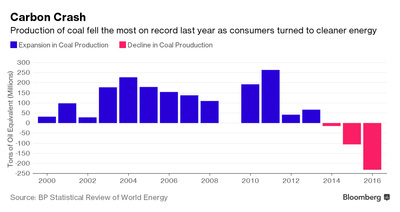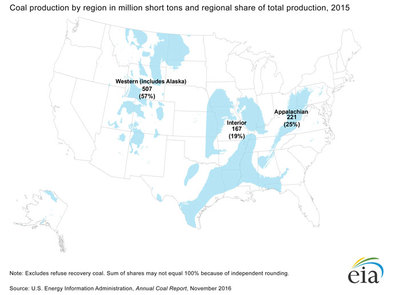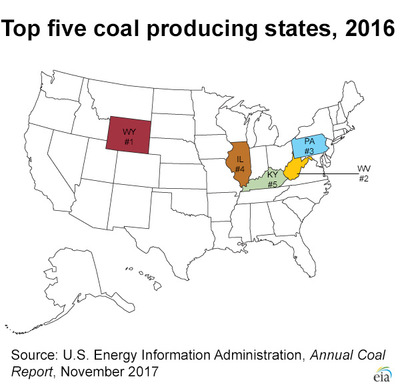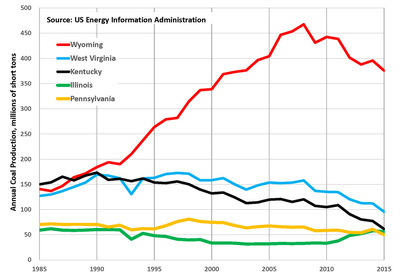Coal Production
Introduction

The global production of coal decreased in 2016 by a record amount. Both China and the US had marked declines in the use of coal. This is in strong accord with goals of the Paris Climate Agreement, as cleaner-burning natural gas rises to greater use and an increasing use of renewable fuels becomes more widespread.
Coal Mining
There are two primary methods for mining coal:
Surface Mining is used when the coal is less than 200 feet below the surface. The top soil is removed to expose the coal, which is mined and transported to coal processing facilities. Another, special method of surface mining is Mountain Top Removal. In this instance the top of mountains are blasted with explosives and removed to expose the shallow seams of coal underneath.
Underground Mining is used to access seams of coal that are deep and not available by surface mining. These deep coal beds are sometimes thousands of feet beneath the surface and can only be mined by drilling long shafts down to the coal. At that deep level extensive horizontal tunnels are created and used to access nearby available coal seams.
Most of the coal mined in the U.S. is accessed by surface mining, because surface mining is considerably less expensive than underground mining.
U.S. Coal Production by Region

The three top regions in the U.S. for coal production in 2015, as shown in the above image, were:
- Appalachian Coal Region
- Interior Coal Region
- Western Coal Region
Top US Coal Producing States

The top five coal producing states in 2016 were:
- Wyoming - 41%
- West Virginia - 11%
- Pennsylvania - 6%
- Illinois - 6%
- Kentucky - 6%
US Coal Production History

The coal industry in the United States is in decline. Several of the top coal producing companies in America filed for bankruptcy in 2016. The number of employees in the coal industry has declined radically since 2011.
Peak Coal
In a way similar to petroleum, production of coal will reach a peak, after which production will enter into a terminal decline. This will occur for several reasons - diminishing energy quality of remaining coal resources, competition from alternate sources of energy, government proscriptions on greenhouse gases and other types of pollution, and increasing coal prices as the "easy coal" is depleted.
There will be two peaks, one based on bulk quantity of coal and the other based on the amount of energy available from the coal produced. Since the highest quality coal tends to be mined first and depleted, it is anticipated that the energy peak will occur substantially before the bulk quantity peak.
Coal peaks will occur at different times in different countries. Some countries have been through both peaks, while others are still producing at increasing rates.